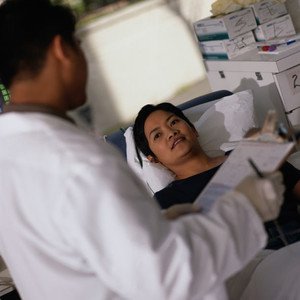Increasing healthcare cost are forcing health authorities to look for low-cost innovations to help bend the cost curve. Biosimilars, a biotherapeutic product which is similar in terms of quality, safety and efficacy to an already licensed reference biological, are such an innovation [1]. Because biosimilars are often offered at lower prices, their use has been promoted all across the world. The initiating of biosimilars in bio-naïve patients is already commonplace in many countries. However, the transitioning from originator biological to its biosimilar for non-medical reasons is still debated. Different strategies about how and when to transition are formulated and applied.
Consequently, many studies are emerging evaluating the effect of certain transition methods on effectiveness and drug survival. Since some countries enforced mandatory transitioning to biosimilars at a national level, while other counties give hospitals more freedom in whether and how patients are transitioned, there is a great heterogeneity in study and transition methods used. The objective of a study carried out by Dutch researchers was therefore to assess the drug survival of an etanercept biosimilar after an open label non-mandatory transition in patients with stable inflammatory rheumatic disease in a shared decision-making promoting setting [2].
Shared decision-making is ‘an approach where clinicians and patients share the best available evidence when faced with the task of making decisions, and where patients are supported to consider options and to achieve informed preferences [3]. The importance of this is underlined in both European League Against Rheumatism (EULAR) and American College of Rheumatology (ACR) guidelines regarding the choice of treatment. Therefore, Müskens et al. created a transition method where patients received both written and oral informed consent regarding biosimilars and the possibility to transition. In addition, they had the choice not to transition or return to treatment with the originator if they encountered difficulties with biosimilar treatment.
The results showed that 89% of eligible patients were willing to transition. After one year the drug survival rate of the biosimilar was 73% (95% CI 0.62‒0.83), compared to a retention rate of 89% (95% CI 0.81‒0.95) for the originator in the historical cohort, p value = 0.013. However, a large percentage of discontinuation after transitioning could be attributed to ‘subjective health complaints’ (symptoms only perceptible to the patient, e.g. tiredness, arthralgia). After adjusting for this possible nocebo effect, the cohorts had comparable retention rates (86% vs 89%, p value = 0.51).
Compared to more directive transition methods used in The Netherlands, this method resulted in a relatively high discontinuation rate after transition to the biosimilar [4]. These findings contradict the hypothesis that more patient involvement in decision- making improves retention rates. Full disclosure of information might in fact increase the nocebo effect, while a paternalistic non-disclosure of information might decrease nocebo-induced adverse events and lead to higher retention rates.
At the same time, it implies that there is tension between maximizing cost-reduction and promoting shared decision-making in the case of transitioning to biosimilars. A directive approach seems to lead to lower rates of discontinuation of treatment, enabling more cost-reduction. However, this approach does not take into account patient values and directly contradicts the latest EULAR and ACR guidelines with regard to shared decision-making.
In conclusion, non-mandatory transition from etanercept originator to its biosimilar in a shared decision-making promoting setting resulted in lower retention rates for etanercept compared to the historical cohort. This difference could largely be attributed to the nocebo effect. Using more directive approaches might maximize possible cost-reductions from use of biosimilars but comes at the expense of the shared decision-making process.
Conflict of interest
Several of the authors of the research paper [2] reported conflicts of interest, including having received grant funding from the Rheumatoid Arthritis Foundation and having received speaker fees or grants from pharmaceutical companies. For full details of the authors’ conflict of interest, see the research paper [2].
Abstracted by Wieland Müskens, Department of IQ Healthcare, Radboudumc, Nijmegen, The Netherlands.
Related articles
EULAR recommendations for DMARDs in rheumatoid arthritis
ACR asked for guidelines on biosimilar substitution
ACR position statement on biosimilars addresses naming and substitution
References
1. Guidelines on evaluation of similar biotherapeutic products (sbps): World Health Organisation 2013. WHO Technical Report Series No. 977, 2013.
2. Müskens WD, Rongen-van Dartel SAA, Teerenstra S, et al. One-year results after transitioning from etanercept originator to biosimilar in a setting promoting shared decision-making in rheumatology. Rheumatol Adv Pract. 2020;4(2):rkaa042
3. Elwyn G, Laitner S, Coulter A, et al. Implementing shared decision making in the NHS. BMJ. 2010;341:c5146.
4. Müskens WD, Rongen-van Dartel SAA, Adang EMM, et al. Biosimilars in the management of chronic inflammatory diseases: the Dutch experience. Mediterr J Rheumatol. 2019;30(Suppl 1):76-81.
Permission granted to reproduce for personal and non-commercial use only. All other reproduction, copy or reprinting of all or part of any ‘Content’ found on this website is strictly prohibited without the prior consent of the publisher. Contact the publisher to obtain permission before redistributing.
Copyright – Unless otherwise stated all contents of this website are © 2020 Pro Pharma Communications International. All Rights Reserved.








 0
0











Post your comment